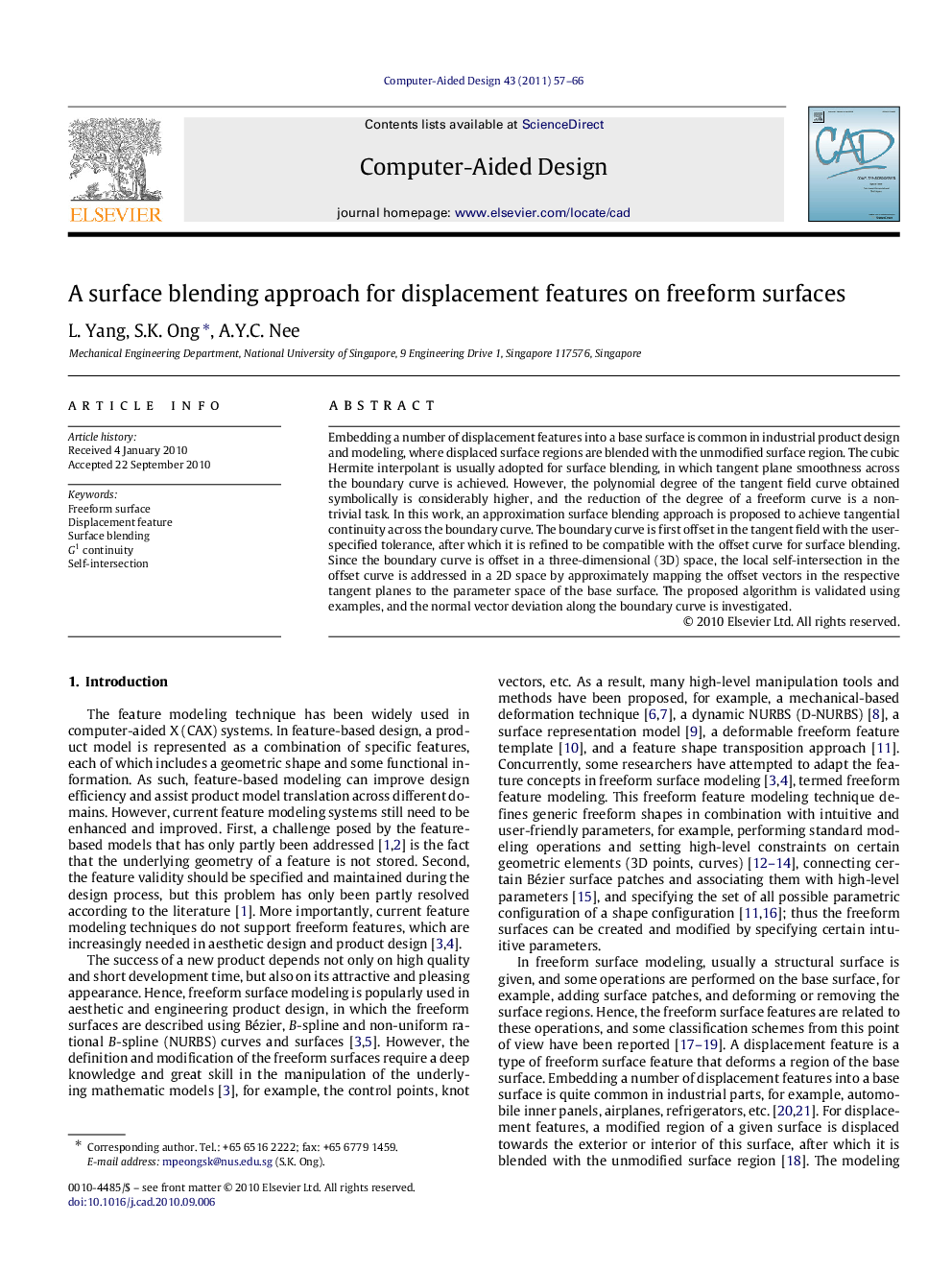| Article ID | Journal | Published Year | Pages | File Type |
|---|---|---|---|---|
| 440864 | Computer-Aided Design | 2011 | 10 Pages |
Embedding a number of displacement features into a base surface is common in industrial product design and modeling, where displaced surface regions are blended with the unmodified surface region. The cubic Hermite interpolant is usually adopted for surface blending, in which tangent plane smoothness across the boundary curve is achieved. However, the polynomial degree of the tangent field curve obtained symbolically is considerably higher, and the reduction of the degree of a freeform curve is a non-trivial task. In this work, an approximation surface blending approach is proposed to achieve tangential continuity across the boundary curve. The boundary curve is first offset in the tangent field with the user-specified tolerance, after which it is refined to be compatible with the offset curve for surface blending. Since the boundary curve is offset in a three-dimensional (3D) space, the local self-intersection in the offset curve is addressed in a 2D space by approximately mapping the offset vectors in the respective tangent planes to the parameter space of the base surface. The proposed algorithm is validated using examples, and the normal vector deviation along the boundary curve is investigated.
Research highlights► A surface blending approach for displacement feature modeling on freeform surface. ► Achieve tangential continuity across the boundary curve. ► Offset tolerance can be set by the users. ► Boundary curve of the displacement feature can be specified by the users.
